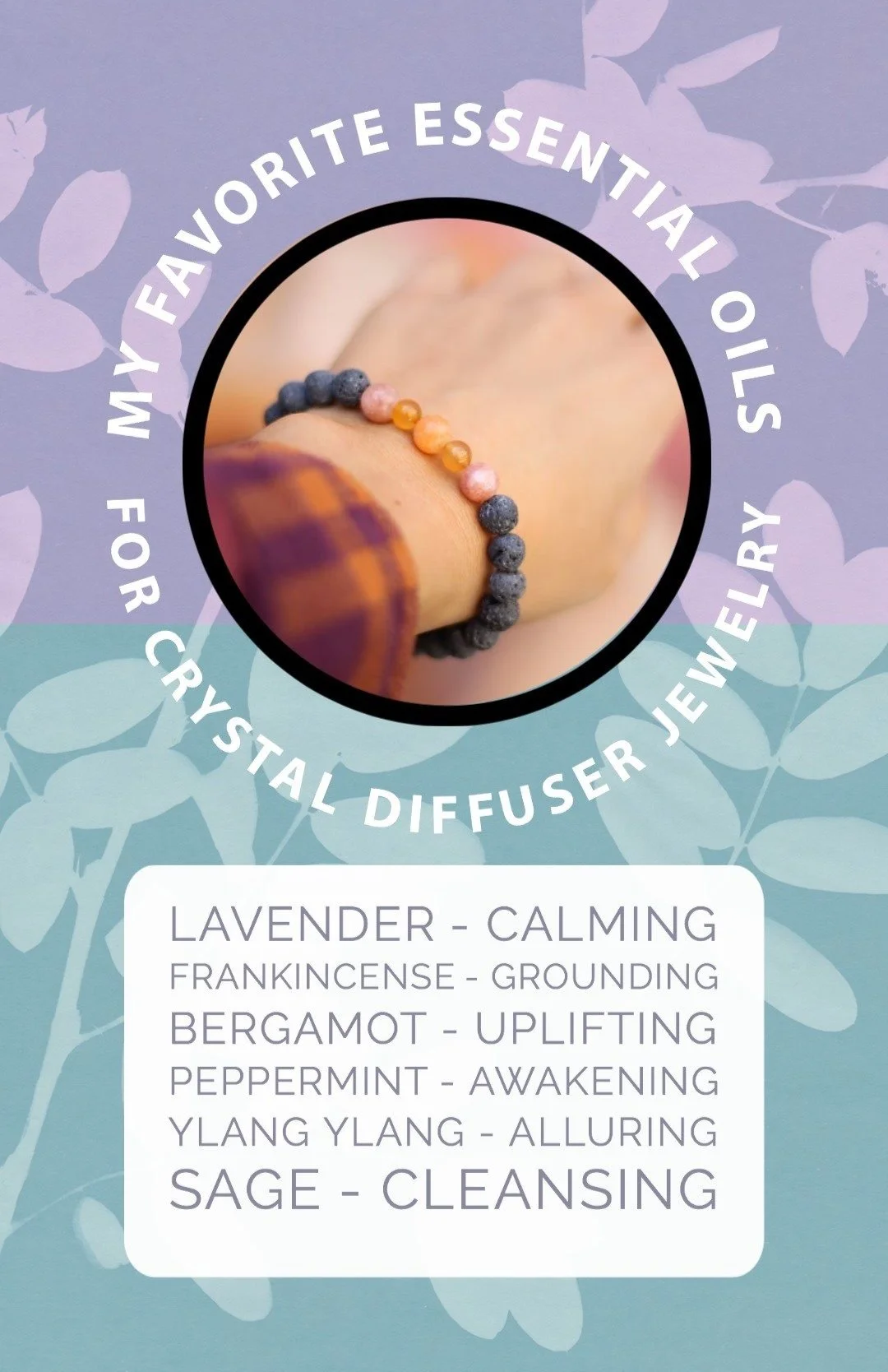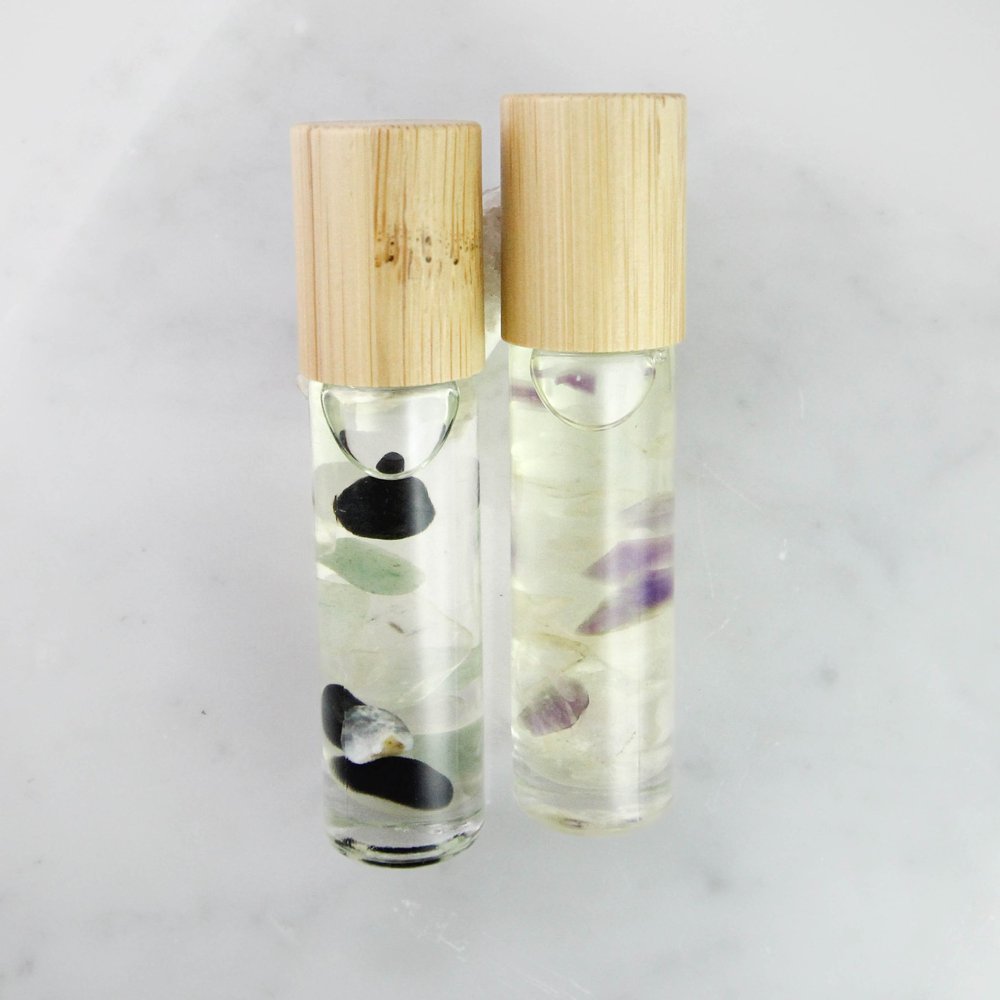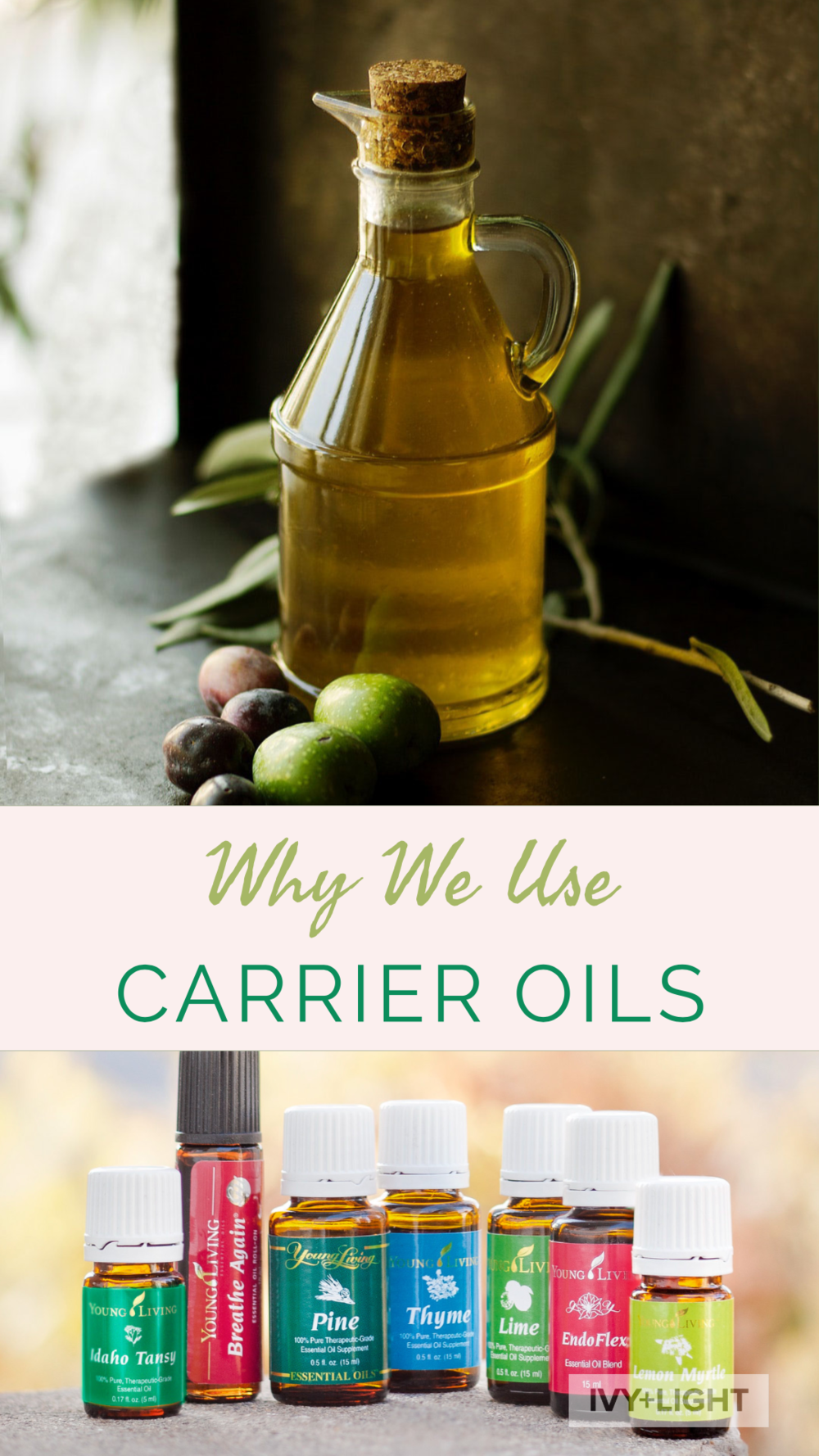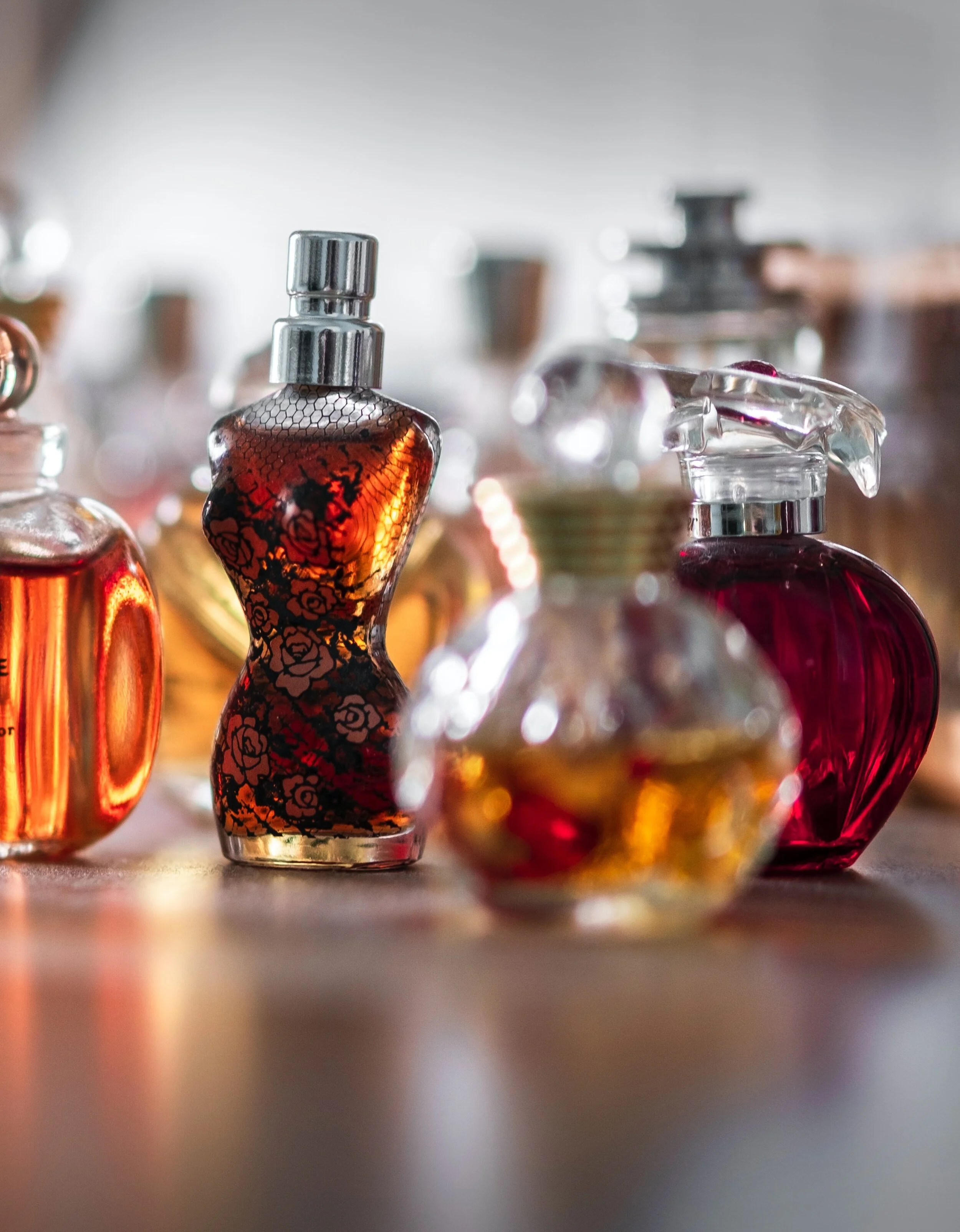How to Make Your Own Essential Oil Perfume
A Beginner’s Guide to Top, Middle & Base Notes for Your Signature Scent
Deep inhale…mmm. Do you smell that intoxicating aroma? Whether rich and resinous, soft and floral, or bright and sparkling, the perfect perfume has a way of harmonizing your energy instantly.
But store-bought fragrances are often filled with synthetics, fillers, and ingredients that clash with your skin or your spirit.
Creating your own essential oil perfume is different.
It’s personal. It’s intentional.
It’s a blend crafted to match your essence, mood, and aura.
This guide will walk you through the art of natural perfumery — from understanding perfume “notes” to choosing fixatives and carrier oils and creating both roll-ons and body mists.
And when you’re ready to go deeper, you’ll find a whole collection of recipes and healing blends waiting for you in the Crystal + Oil Synergies E-Book.
Let’s create your signature scent. ✨
What Makes a Great Natural Perfume?
Unlike synthetic perfumes, which rely on lab-created compounds, essential oil perfumes are:
Alive, shifting with body heat and mood
Layered, developing over several hours
Intuitive, blended specifically for your energy
Healing, thanks to the aromatherapeutic benefits of each oil
A truly beautiful natural perfume should:
✔ Smell lovely from the first inhale to the final trace
✔ Match the energy you want to embody
✔ Have staying power
✔ Feel harmonious on your skin
✔ Offer emotional + energetic support
To create this magic, we use perfume notes—the building blocks of any well-designed scent.
Understanding the “Chord” of a Perfume (Top, Middle & Base Notes)
A balanced perfume is like a musical chord: three distinct notes create one harmonious, captivating whole.
Here’s how each note works.
TOP NOTES (Light, Bright, First Impression)
Top notes, such as citrus oils, have the lightest molecules, making them evaporate within fifteen minutes, leaving only fond memories. This is typically the first scent that registers when you catch a whiff of any perfume. . . faint melodic lovely preludes. As these early notes wane, the middle notes awaken.
Common top notes:
Grapefruit
Lemon
Bergamot
Tangerine
Peppermint
Spearmint
Eucalyptus
Aromatherapy effects:
✨ Uplifting
✨ Energizing
✨ Cleansing
✨ Refreshing
MIDDLE NOTES (Heart Notes, Emotional Body of the Perfume)
Often floral scents, middle notes last up to an hour before they fade. They are the heart and soul of your harmony, the familiar nuances that bridge the lighter romantic arias with the heavier tones to come.
Common middle notes:
Lavender
Geranium
Rose
Ylang Ylang
Chamomile
Rosemary
Black Pepper
Aromatherapy effects:
✨ Balancing
✨ Stabilizing
✨ Emotionally harmonizing
BASE NOTES (Deep, Grounding, Longest Lasting)
Similarly to the previous layer, the base notes begin emerging right before the midnotes dissipate. While the base notes – usually woodsy oils – commonly last about six hours, they’ve been known to linger for as long as twenty-four, so you want the base notes to be something you truly appreciate. When you add all three types of oils to your perfume, you will enjoy its layered delights for hours on end.
Common base notes:
Sandalwood
Patchouli
Vetiver
Cedarwood
Frankincense
Myrrh
Benzoin
Aromatherapy effects:
✨ Grounding
✨ Soothing
✨ Heart-opening
✨ Meditative
How to Choose Your Perfume Notes (With Example Blend)
A simple perfume can contain:
1 top note
1 middle note
1 base note
But you can also get creative and use five or seven oils to create a more nuanced scent.
To show you how a perfume chord comes together, here’s a real blend straight from my e-book:
Sneak Peek Recipe: Citrus Blossom Perfume
A bright, uplifting, emotionally balancing blend from the Crystal + Oil Synergies Healing Guide + Recipe E-Book.
Crystals:
Rose Quartz + Carnelian
Essential Oils:
11 drops Grapefruit
6 drops Lemongrass
3 drops Geranium
3 drops Peppermint
3 drops Frankincense
How to Make It:
Fill your roller bottle about ¼ full with crystals.
Add the essential oils.
Allow the blend to rest overnight so the scents synergize and deepen.
Fill the rest of the bottle with your chosen carrier oil.
Apply to pulse points or the nape of the neck whenever you need a mood boost or energetic lift.
This is just one of the 21 custom healing recipes in the e-book — including chakra blends, emotional support perfumes, serums, and high-vibration synergy blends.
Why Fixatives Work (The Heartbeat of Long-Lasting Natural Perfume)
Fixatives are the quiet magic-makers of natural perfumery — the grounding, steady tones that hold a fragrance together. While your sparkling top notes fade quickly and your romantic middle notes carry the heart of the scent, it’s the deep, resinous fixatives that anchor the entire blend and give it that delicious, long-lasting presence.
Their molecules are large, rich, and slow to evaporate. Even a single drop can “stretch” your perfume, giving it body, depth, and a sense of cozy, soulful warmth. Most natural fixatives don’t shout their scent loudly — they whisper. They weave. They gently wrap your brighter notes in a warm embrace that helps the whole blend smell more cohesive, balanced, and intentional.
You don’t always smell the fixative directly…
but you absolutely feel its power.
What Fixatives Actually Do:
Slow the evaporation of lighter oils
Add depth and warmth
Help your perfume last 6–24 hours
Smooth transitions between notes
Subtly strengthen the overall aroma
Best Natural Fixatives:
Benzoin – warm, vanilla resin
Frankincense – grounding, resinous depth
Vetiver – earthy, smoky, deeply anchoring
Patchouli – musky, full-bodied warmth
Myrrh – golden, spicy resin
Orris Root – powdery, elegant floral
As you practice blending, you’ll naturally begin to sense which fixatives soften citrus, stabilize florals, or wrap a blend in earthy warmth. This is where natural perfumery becomes less of a formula… and more of an intuitive, sensory art.
How to Blend Your Essential Oil Perfume (Step-by-Step)
Choose your base, middle, and top notes
Start with the base (1–2 drops)
Add the middle
Add the top
Adjust drop by drop
Let rest 24–48 hours
Add carrier oil
Bottle and enjoy
Best Carrier Oils for Essential Oil Perfume
⭐ Best Overall for Perfumes:
Jojoba Oil — closest to natural skin oils, long shelf life, best for perfume longevity.
⭐ Other Beautiful Options:
Grapeseed Oil
Fractionated Coconut Oil (MCT)
Pomegranate Seed Oil
Rosehip Seed Oil
For more insights, explore:
7 Best Carrier Oils for Essential Oils (How & When to Use Them)
How to Make an Essential Oil Body Spray
You’ll Need:
Essential oils
6 oz distilled water
1 tbsp vegetable glycerin
1 tbsp witch hazel or high-proof alcohol
Glass spray bottle
Steps:
Mix essential oils with glycerin + binder
Shake well
Add water
Shake gently before each use
Safety Tips for Essential Oil Perfume
Always patch test
Dilute “hot” oils (Cinnamon, Oregano, Clove, Ginger)
Use caution with cooling oils (Peppermint, Eucalyptus)
Avoid sun exposure 12 hours after applying photosensitive oils:
Grapefruit
Lemon
Bergamot
Angelica
Dill
🌟 Ready to Explore More Crystal + Oil Magic?
The Crystal + Oil Synergies E-Book includes:
✨ 21 custom healing recipes
✨ Chakra + emotional blends
✨ Tips for sprays + serums
✨ Crystal reference section
✨ Safety + science guidance
✨ Bonus diffuser + culinary ideas
✨ Printable recipe cards
✨ Clickable links for deeper practice
It’s your guide to creating personalized, high-vibration blends that elevate your wellness routine.

































